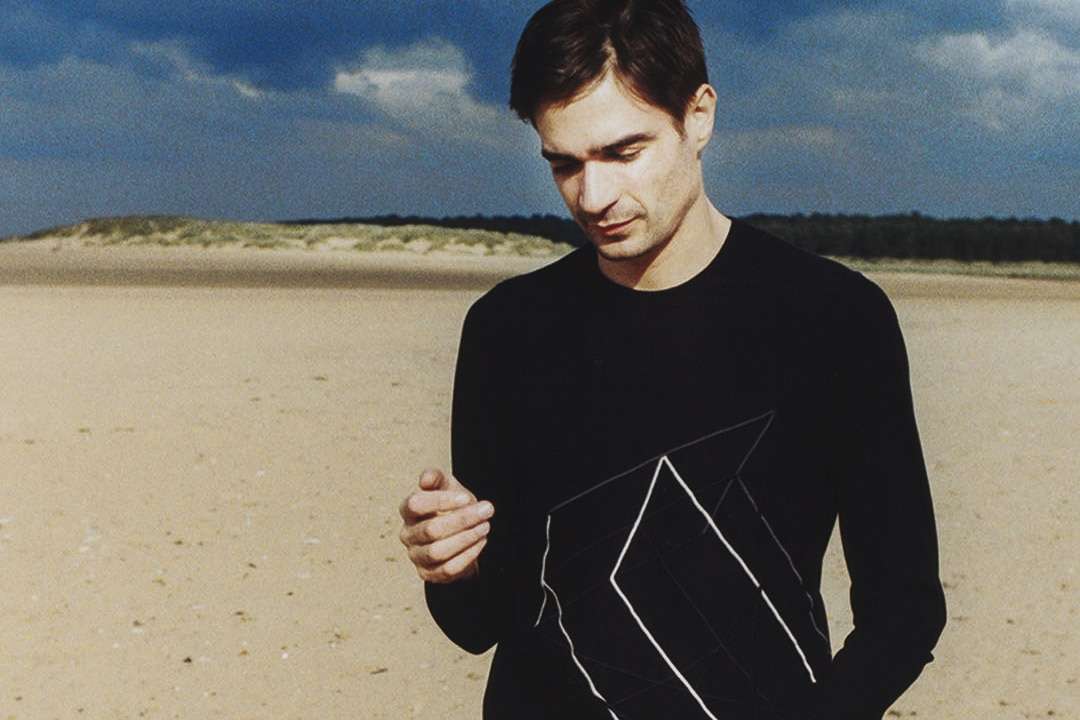Music for Psychedelic Therapy, Jon Hopkins’ new album, offers a reflective inward gaze and an opportunity for healing.
Jon Hopkins has been making music all of his life. A classically trained pianist, his first break came playing keyboards for indie UK artist Imogen Heap in his late teens. He toured with her for a year before starting to write his own music and landing on a small London label in 1999.
“I didn’t know what I was doing then,” he told Ethos. “I was just figuring it out.”
Hopkins quickly found his way, though; bigger breaks would come, like when his work appeared in several episodes of Sex and the City. “It’s quite a strange link, really,” he says. “It wasn’t something anyone saw coming.”
He had other boosts, including working alongside one of his heroes, Brian Eno—a legend in electronic music. “What’s so great about him is is just exactly the person you’d hoped he would be,” Hopkins says.
Hopkins and Eno would partner to help produce Coldplay’s 2008 album, Viva La Vida–with the title track based on an original composition Hopkins wrote.
These successes allowed Hopkins time—the most precious commodity for a musician. He dived deep into his work, scoring movies and releasing acclaimed solo albums like 2011’s Diamond Mine and 2013’s Immunity. “I was always doing many things at once,” he says. In 2018, his fifth studio album, Singularity, earned a Grammy nomination for best dance/electronic album.
But 2018 was pivotal in another way—it took Hopkins to Ecuador as part of an expedition to go and live in a cave underneath the Amazon for four days and three nights, “which was as extreme as you can imagine, and the goal of that was to be inspired to create music from that place—not to create it in that place, but to live and breathe that place.”
He came out of there more aware of the connection between human actions and the natural world—the good and the bad. It was such a big experience, though. It took time to integrate it, something he says is an ongoing process. Touring for Singularity was the immediate task at hand. He pushed the experience inside the jungle further to the back of his mind. Then, the pandemic hit. Suddenly, Hopkins found himself with lots of time. That, he says, “opened the floodgates.”
Like the rest of the world, time sort of stood still for Hopkins during the early months of the pandemic. It gave him space to process the experience in Ecuador, as well as other experiences, namely other journeys with psychedelics.
“I think this record has a clear intention,” he says, pointing to its title. “But first and foremost, it is still an album of music that you can listen to in any way you choose. But I wanted to honor the impact that psychedelic medicines have had in my life,” he says.
Like most musicians, especially in the club scene, Hopkins was no stranger to psychedelics and substances like MDMA. He had been smoking marijuana since his teens—it’s what helped inform his songwriting.
“You come into contact with certain substances and it’s always an interesting crossover,” he says. “You take something in order to dance and have fun, and then you end up having an accidental spiritual experience. And you start to dig deeper into that, and I became interested not just in recreational use, but finding what is the deeper thing that this leads you towards?”
That sent Hopkins to experiment with more natural substances like psilocybin and DMT. He says it very quickly led him to more introspection and one of the reasons he made the new record. “Because psychedelics had guided my music in a very different direction,” he says. “It’s part of what I see as the emerging framework around what is going to become a legal thing, eventually, globally.”
Psychedelic therapy
He’s talking about clinical uses of psilocybin, ayahuasca, DMT, and other substances. The dissociative substance ketamine, which is legal in the U.S., is already being used in a number of therapeutic clinics and centers to treat mental health issues. But true psychedelics like psilocybin and DMT are expected to follow suit soon. Last year, voters in Oregon passed legislation legalizing therapeutic use of psilocybin for mental health issues. The state is currently building out its regulatory framework for practitioners with the aim of getting it off the ground next year.
Other states are expected to follow the steady stream of research behind the benefits of psychedelics—including research by another Hopkins—Johns Hopkins University’s prestigious research facility in Maryland. It has become a leader into psychedelic studies. And the findings are significant; some point to these substances as viable—and often more effective—alternatives to conventional antidepressants. A single psychedelic experience can relieve symptoms for months at a time. And while treatment-resistant depression affects as many as 60 percent of people prescribed antidepressants, psychedelics are highly effective.

The industry is seeing meteoric growth with investments from the likes of Peter Thiel and Shark Tank’s Kevin O’Leary. Celebrities are touting the benefits, too. The Smith family recently came out of the psychedelic closet about the benefits of psychedelics they’ve experienced.
As these substances see more mainstream acceptance, more clinics coming online, more “guided trips” as common as a trip to the day spa, Hopkins says music is ever the critical companion. It’s the difference between a “good” trip and a “bad” one for many.
If icaros are the music of people living in the forests among the roots and vines that make up the ayahuasca brew, then the computer is the modern folk instrument equivalent for those of us parked in Herman Miller desk chairs in front of screens all day instead of the soft moss-covered trunks and stones of the jungle floor.
“Every indigenous psychedelic ceremony has music as a big feature,” Hopkins says. “It’s a big part of it, and icaros—the songs the shaman sings during South American indigenous ceremonies—we just don’t know what we’re doing in that area. I think I think our modern equivalent is making immersive music.”
Hopkins says he began looking into the guided experiences and how much of a role music plays in that. But there was no music specifically created for psychedelics, he says. There is lots of music made on psychedelics—Grateful Dead and their ilk—but that’s a different experience altogether. Many psychedelic guides would use classical music, he says, written in an entirely different mindset.
To write Music for Psychedelic Therapy, Hopkins says he went into a kind of a trance state. “A lot of music comes through as a reaction to difficult experiences that are going on in life,” he says, pointing most recently to the pandemic. “I was also going through personal heartbreak, and it was a very long, dark winter in England. But I was so lucky to have a little studio to be able to just continue writing. And I just found all this music started coming through. And I really do not feel this comes from me, this comes through me,” he says.
For Hopkins, the music is just another reminder of the bigger picture—that there is, perhaps, something beyond the human experience.
“As you enter the psychedelic space, lots of times in your life, you start to realize more than ever, that we are like vessels for creativity, and it’s not coming from me but it’s filtered through the experiences that I’m having.” This was the case with the album, he says.
In retrospect, Hopkins says he can look back and analyze where he thinks the music came from, which medicines influenced the work, which experiences helped develop it. But it doesn’t really matter; at the time, he says, he has no idea of any of that—the music just comes through, and that makes it all the more meaningful.
“I’m just following this instinct I just made—like that sound is to go there. And, okay, now I’m hearing this note here, and that goes there. That’s all it really is at the time,” he says. “So, in a way, it’s kind of up to everyone to have their own experiences with it, and that’s likely to be completely different than mine.”
Part of what makes music such an important part of a successful psychedelic journey, Hopkins says, is the intention behind it, even if it’s coming through in an instinctive way.
Like the icaros of the Amazonian shamans, there’s intention behind each syllable, each note. The songs are more than just soundtracks alongside the psychedelic experiences, they’re main ingredients to its success.
This intention matters, he says. “We need single bodies of work to guide people through these experiences. So this is my little contribution to it.”


